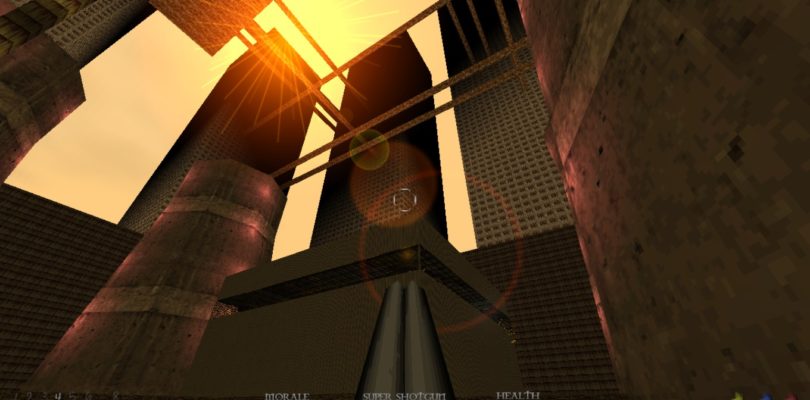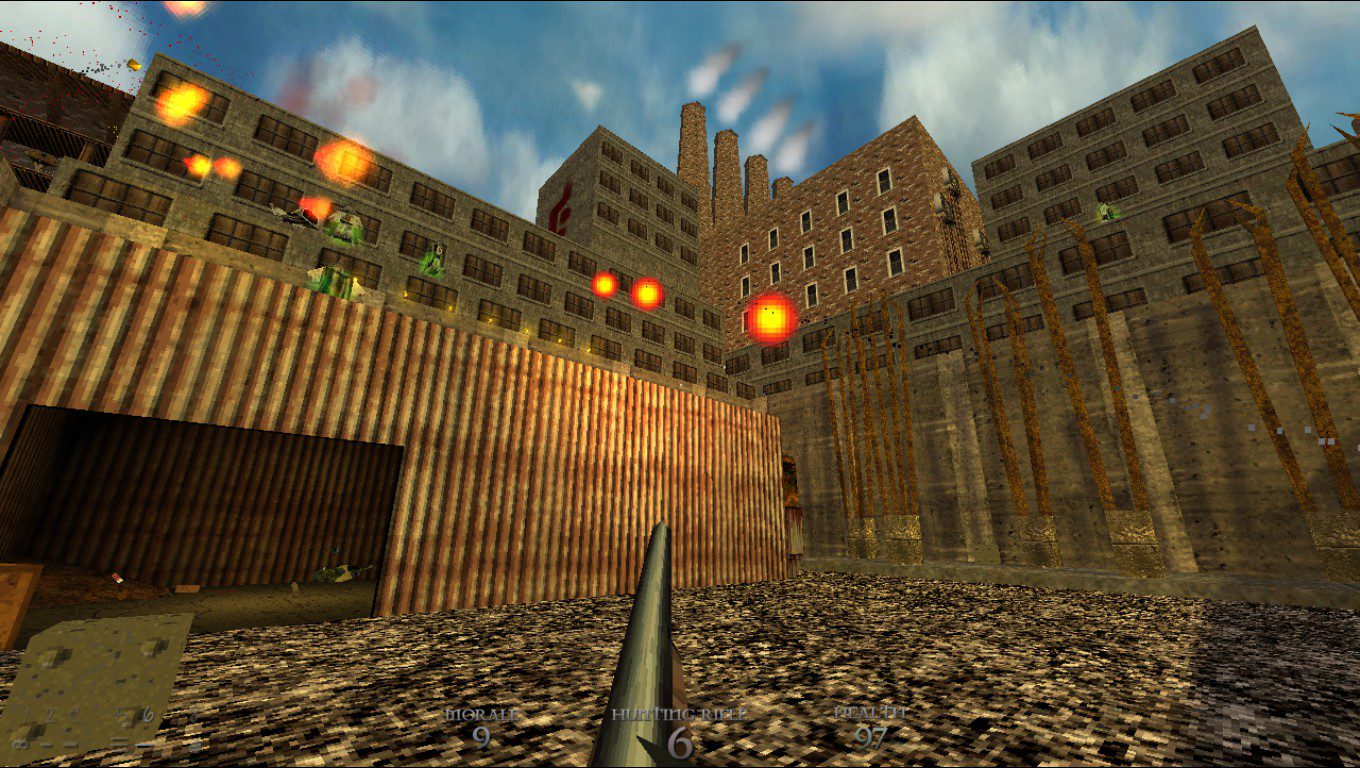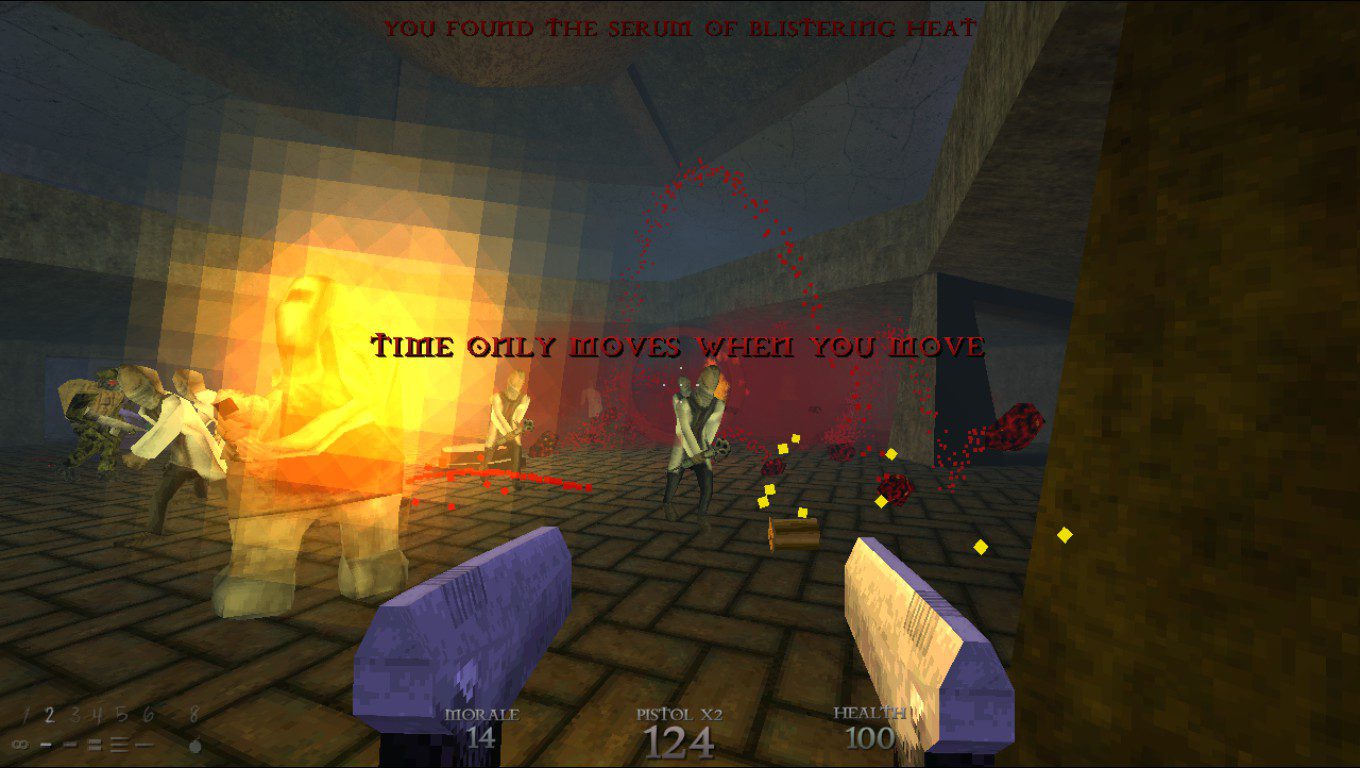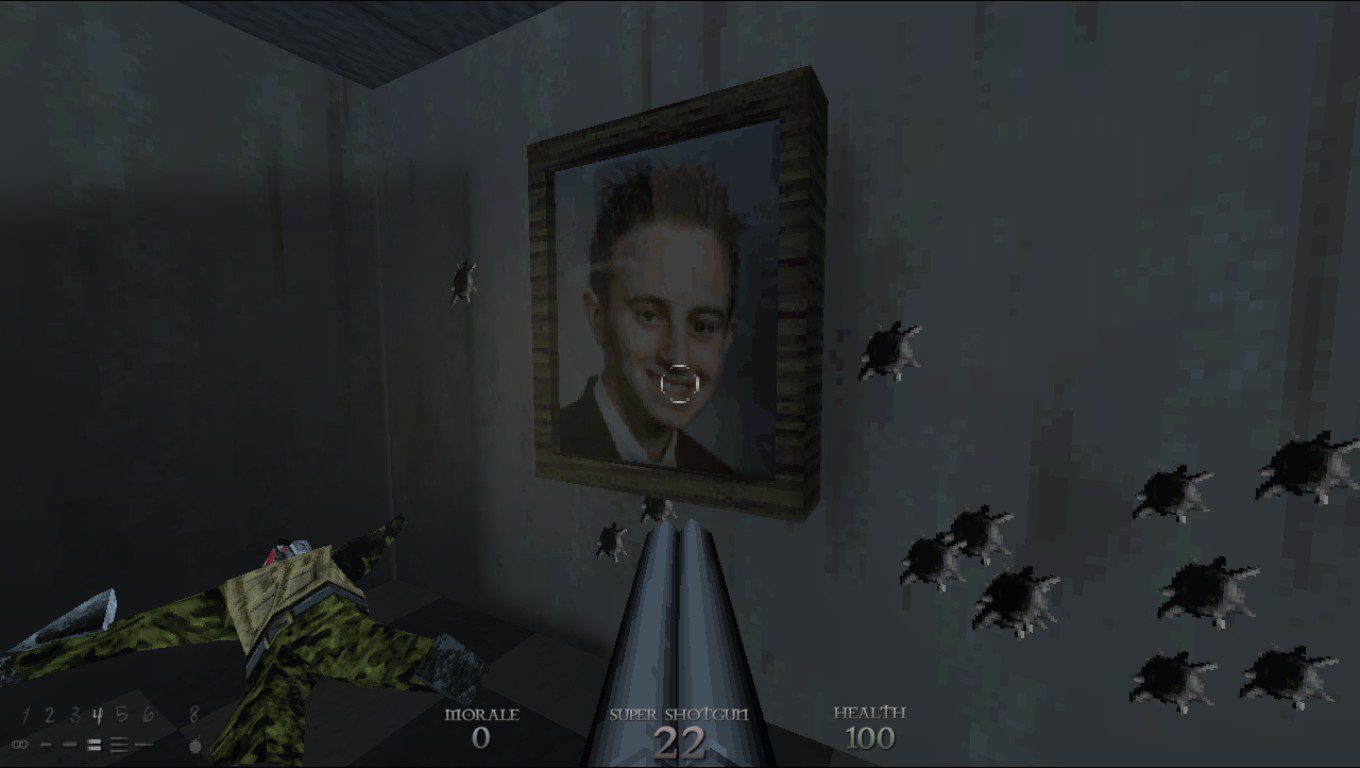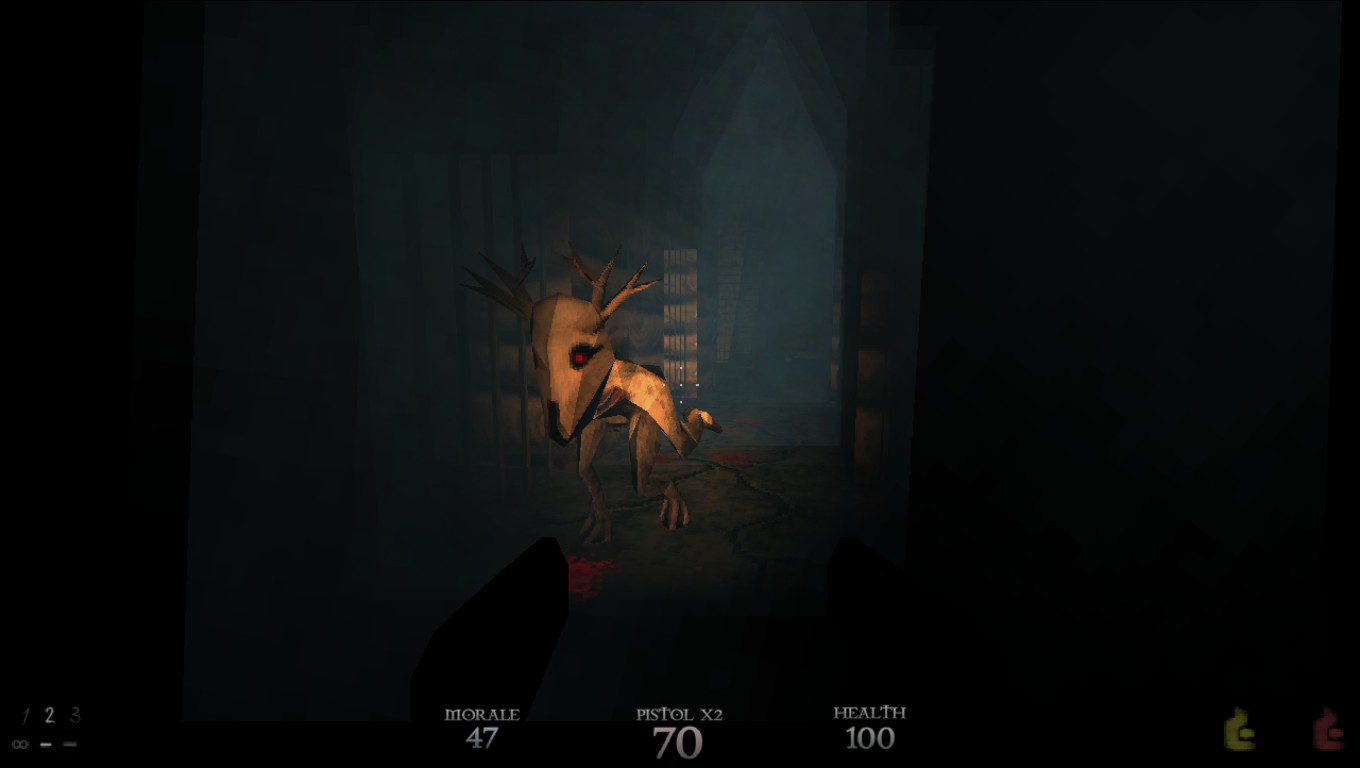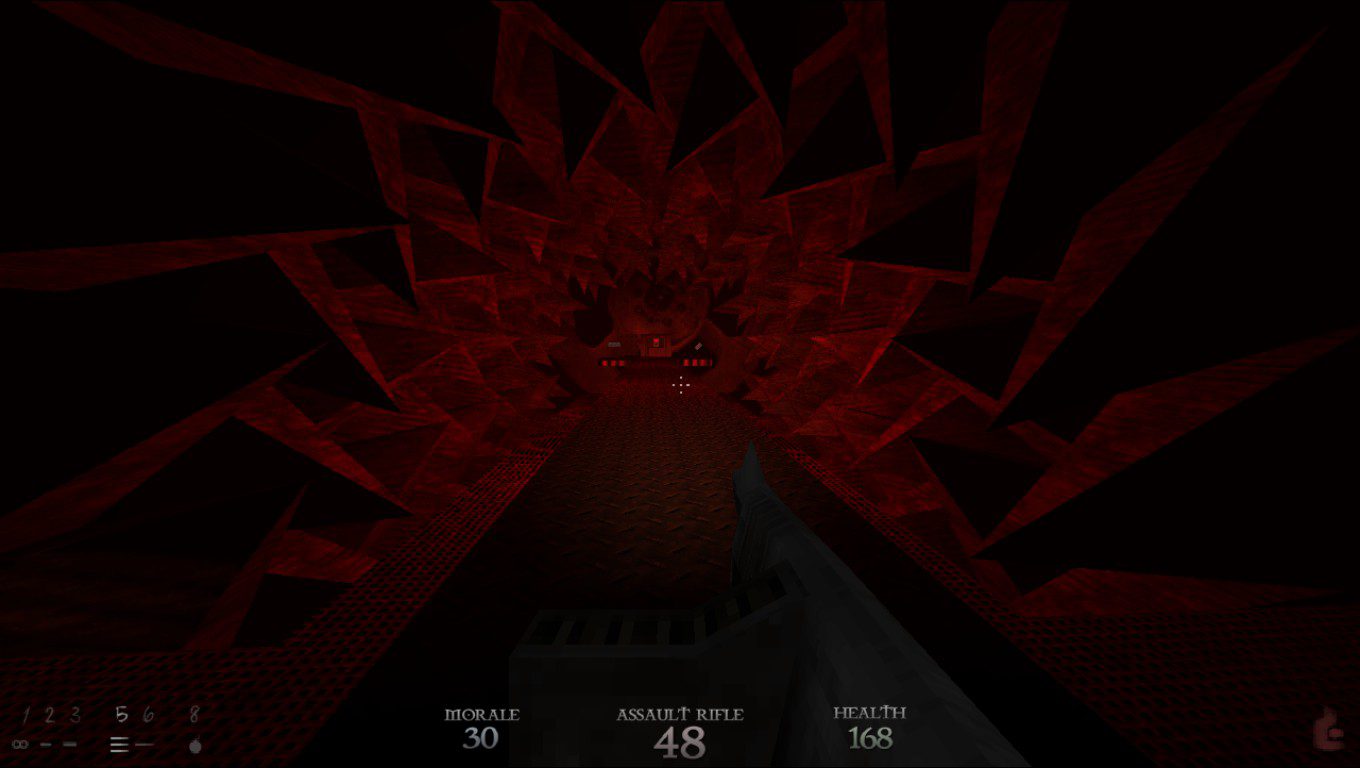Even as video games continue to push the boundaries as a medium visually, there is something timeless about a retro look. For those that played on a PC in the early 90s, there is a visual style that probably comes to mind. Blocky polygons, rudimentary lighting that was monumental at the time, and blazing fast gameplay. Dusk takes the mold of games like Quake to create something unique that will have fans of those games smiling broadly.
Before really diving into this feature on Dusk, know that the game is still in Early Access on Steam. At the time of this writing, two episodes are available with a multiplayer component called DuskWorld. There is at least a third episode planned and it’s one of those games that will launch when it’s ready. That said, what is currently available is enough to have a ton of fun with and there are few bugs unlike most Early Access titles.
The world of Dusk is a grim adventure surrounded with occult and dark mystery. Episode 1 focuses on a rural town, while Episode 2 is more industrial in nature. Players will be blasting chainsaw wielding monsters, as well as more demonic creatures. Each level is filled with nooks and crannies to discover, tallying up that secrets found at the end of the level. There’s almost a simple puzzle box element to the level design, as there is little direction given. Usually going where the enemies are will generally lead players to the right place, but sometimes it takes some running around.
Dusk is a first-person shooter set at a lightning pace. Weapons vary from things like two farm sicles to crossbows to more traditional guns like a hunting rifle. Each weapon has its own strengths, but only a couple have the wow factor that games like Unreal Tournament or Turok had.
Unfortunately, while there are a ton of little things to find in levels, they also have the same downfall of games in that classic era. Trying to find a colored key to open a door can lead to a lot of running around and if all of the enemies are dead it can be rather dull in larger areas.
Combat in Dusk is pretty straight forward; shoot enemies, keep moving, and don’t get hit. Each enemy has a particular behavior and attack, and when they’re used together in a scenario, knowing what they all do is essential at higher difficulty settings. Keeping track of ammo levels is also a must.
Really the one thing that makes Dusk so appealing is the movement. Bunny hopping is baked into the game and learning to hup through environments properly can make for a ton of speed. Add in things like using explosions to get higher jumps or picking up objects while standing on them and jumping and it feels like a culmination of classic 90s PC games. There’s also a great slide that one can do with a tap of the crouch button. A few of the secret areas even reward clever use of those exploits.
Once I learned how to do the crate hop trick, I tried things like getting out of bounds or hopping over fences that didn’t appear accessible. Getting the timing of the commands can cramp the hands a bit, but feels awesome to get into those places and then unlock a weapon early or get additional health.
Episode 2 also adds in a climbing upgrade that allows scaling straight up just about any surface. One can also stop climbing, turn, and jump to another wall, which allows for getting out a massive hole by from wall to wall or reaching the tallest towers. Again, exploration of these areas are usually rewarded with more than just getting the text to appear and add a number to the secrets discovered. Exploring is what continues to bring me back to Dusk.
Sound design also fits the theme with digitized grunts, guitar riffs, and excellent use of silence. There were plenty of times I jumped during these tense moments, especially after the adrenaline was full force during a big fight. The music tracks in the game are headbangers, so fans of metal may even find themselves popping the music on during a drive.
The sound design, visuals, controls, it all fits the theme perfectly to create a lot of “hell yeah” moments. Dusk is a power fantasy about a dude with big guns taking out the horrors of a quaint town with some dark secrets. What’s not to love?
There are some genuinely amazing moments told through the environment, especially in the second episode, which trades the scary farms for a sinister industrial machine. Pressing deeper and deeper into the madness was definitely challenging and quick saving periodically should become a habit.
There are a few design choices that those not looking for a throwback to the Quake days may not enjoy as much as someone who is. As I mentioned before, the levels can be hit and miss with pacing and sometimes trying to discern what to do can be bothersome. Also, some levels rather short. Even a moderately skilled player could get through most of them in a handful of hours. Some of the uses of the simple polygons can make for some truly awesome looking scenes though.
This is the sort of game where the real joy comes from beating levels again and again at higher difficulties or with faster times. That type of replay value may not appeal to all players.
Of course, the campaign can also be played more like a horror game. Set it to a higher difficulty and set the run to speed to not always be on and it can make for some scary moments, especially the invisible monsters.
As a fan of all things retro, I have really enjoyed playing through Dusk, watching it grow, and seeing what other players are capable of. For those into speedrunning, Dusk is incredibly active with players beating levels in seconds with ridiculous execution. A whole episode can be beaten in minutes due to out of bounds exploits, which can add a lot more to the game for those looking for a new speedgame.
Those looking to frag noobs in a retro way should look into picking it up for the multiplayer. Although finding a match can be hard due to the smaller player base, getting a group of friends together for it can be a ton of fun. To compete inside the game’s community, I recommend checking out their official Discord. Lots of talented players have been showing their skills and there will likely be more modes and such in the future.
Personally, I’ve really enjoyed Endless mode, which puts players in an arena to see how long they can survive wave upon wave of enemies. It’s simple and fun and definitely worth messing with.
Also worth noting are the problems that classic PC games bring with them that Dusk simply doesn’t face. Getting Quake, Doom, or Duke Nukem to run on a modern PC can be a bit of a challenge sometimes, especially if that game hasn’t been re-released in a modern PC way. Dusk takes all of the nostalgia of those games to make something new.
Sometimes Dusk feels a bit trapped trying to emulate those golden days, but I think Dusk may be a future classic that people will come back to for many years to come. New Blood Interactive definitely has an understanding of why those classic games are so deeply rooted in gaming history. They are certainly a publisher to follow.
Here’s hoping Episode 3 is just as fun as the first two. A full review will be done once the game fully launches.
For more information on Dusk, check out the official website. A digital copy was provided for the purpose of coverage.

